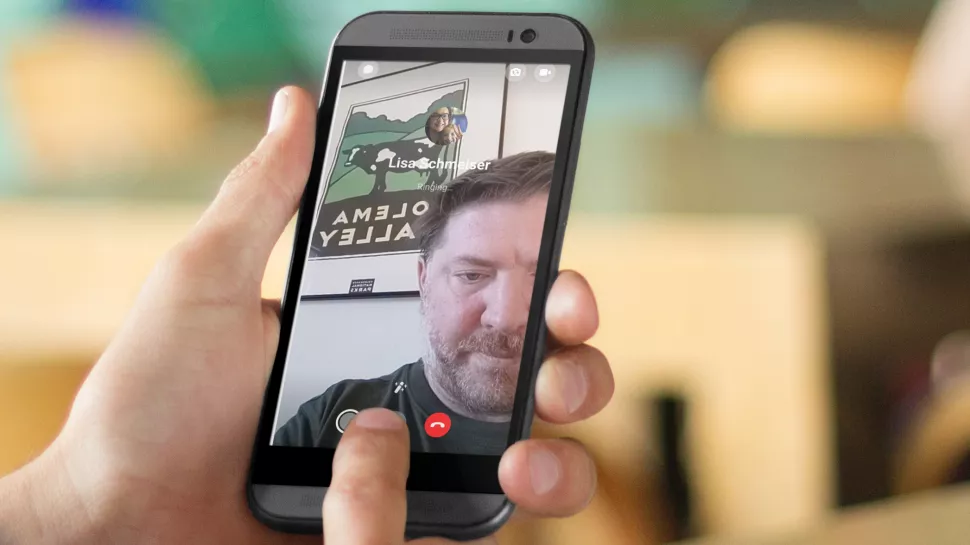
When it’s time to start video chatting, you’ll understand why Android users are so eager to find the best FaceTime alternatives. After all, Apple’s chat app stands out for its clear audio video chats. You can even compare up to 32 people in a Group FaceTime call. But unfortunately, since FaceTime only works on iPhones, iPads, and Macs, Android users are excluded.
Fortunately, there are a lot of options for FaceTime. While you may not be able to try Apple’s video chat app on your favorite Android device, you have plenty of choices in voice and video calling apps that offer many of the same features.
- The best Android apps
- The best encrypted messaging apps
Also: iPhone vs Android
Here are some of the best alternatives to Face Times for Android users who feel left out of the conversation.
Facebook messenger:
Perhaps the most readily available FaceTime option is a service you’ve probably signed up for before. If you are one of the millions of registered users on Facebook, you can make individual or group audio and video calls using the free Facebook Messenger app. You can also send voice messages from your contacts and share other audios, videos and photos with them. Since Messenger is a cross-platform app and is quite widely used, you never have to worry about someone being left out of a conversation, even if you have to contend with Facebook’s experience of not always respecting its users’ privacy.
Skype:
The Skype VOIP and video calling app pioneered voice and video calling on computers and smartphones and remains a popular teleconferencing and video calling service even after joining the giant Microsoft. Skype users can make individual and group calls or video calls with other Skype users for free; they can also call mobile and landline numbers, albeit for a fee.
Skype has built-in instant messaging and users can connect their text messages to Skype to read and reply to their text messages on a PC or Mac. Skype has a pretty good user base and the added benefit is that it probably is too. installed on your contacts’ Windows desktops or laptops, not to mention their smartphones.
Google Duo:
Google has had a very mixed history when it comes to messaging apps, releasing a bunch of different apps but ultimately pulling the plug on something else. So far, the Google Duo seems like a pretty solid exception to this model, with solid and crystal clear performance over Wi-Fi or cellular connections.
Google Duo works on both Android and iOS devices, so you can call your friends and family no matter what type of smartphone they use. You can have one-on-one conversations or group voice and video chats with up to eight people, and Duo lets you leave video messages. Duo has a nice “Knock Knock” feature that lets you see who is calling with a live video preview and also has end-to-end encryption to protect your privacy.
Duo’s tighter integration with many of Google’s mobile apps and the fact that it comes pre-installed with many other Google apps and services make it a natural choice for Android users.
Snapchat:
Snapchat has come a long way from its bizarre beginnings as a self-destructing text and photo messaging app that has branched out with tons of social features like augmented reality stickers, Bitmoji, and media stories that you can share with your friends and contacts.
This growing list of features also includes video chats with up to 16 friends at once with live filters and lenses to transform your videos and create crazy special effects.
Whatsapp:
Another of the best FaceTime alternatives that is already widely used is Facebook’s WhatsApp, which allows you to make voice or video calls over Wi-Fi or data. WhatsApp can also send audio or video messages in addition to text messages.
Instead of forcing you to juggle usernames or PINs, WhatsApp creates your contact information in your phone’s contacts, making it quick and easy to set up and use. Desktop also allows you to send and receive instant messages from your desktop or laptop. And the Mobile version has just released the long-awaited Dark Mode feature for WhatsApp.
Jus Talk covers the basics in a mobile communication and chat app with 1-on-1 and group audio and video chat (up to 16 people) and the ability to text, photos, share locations, GIFs and design of logos.









